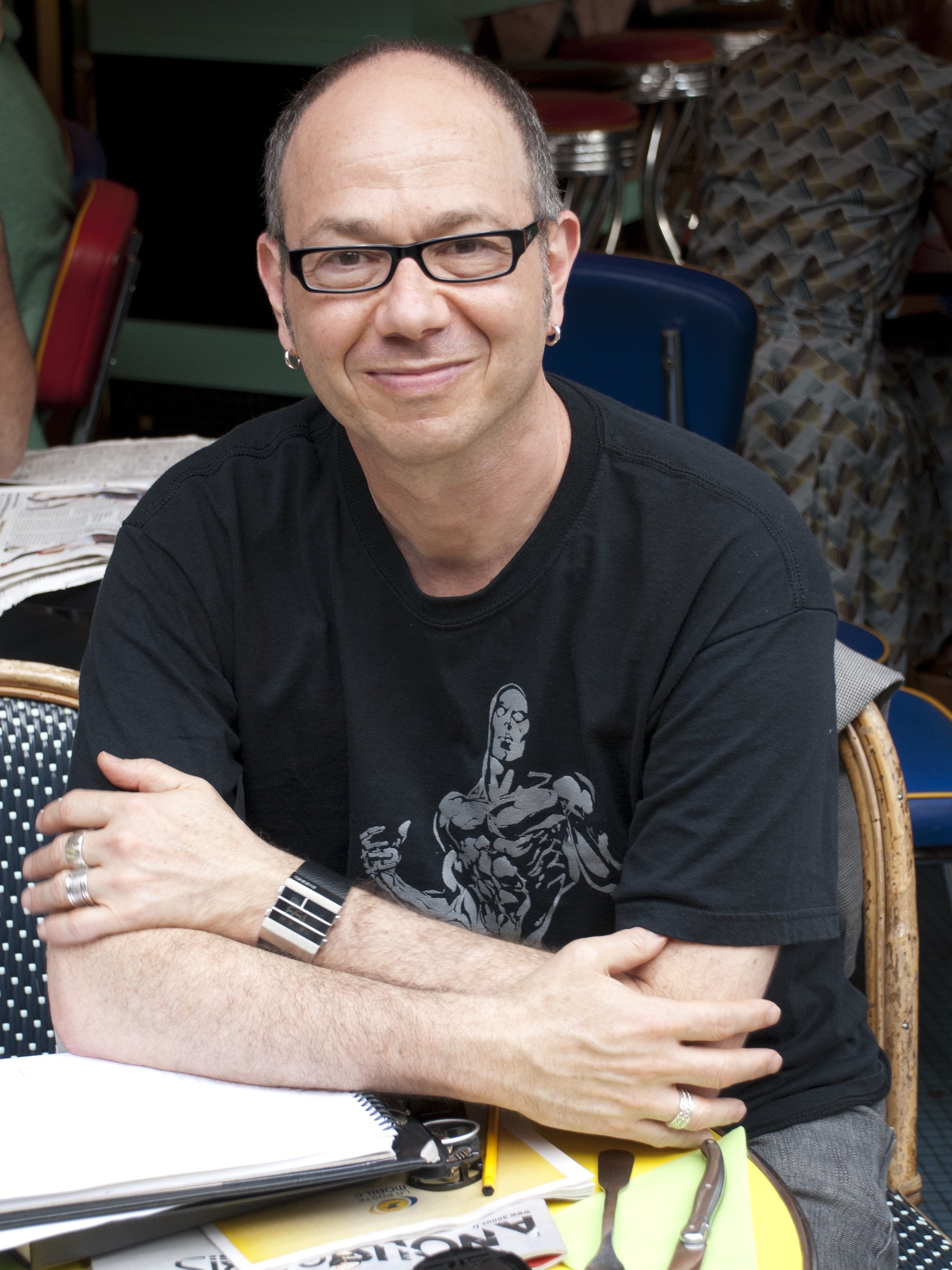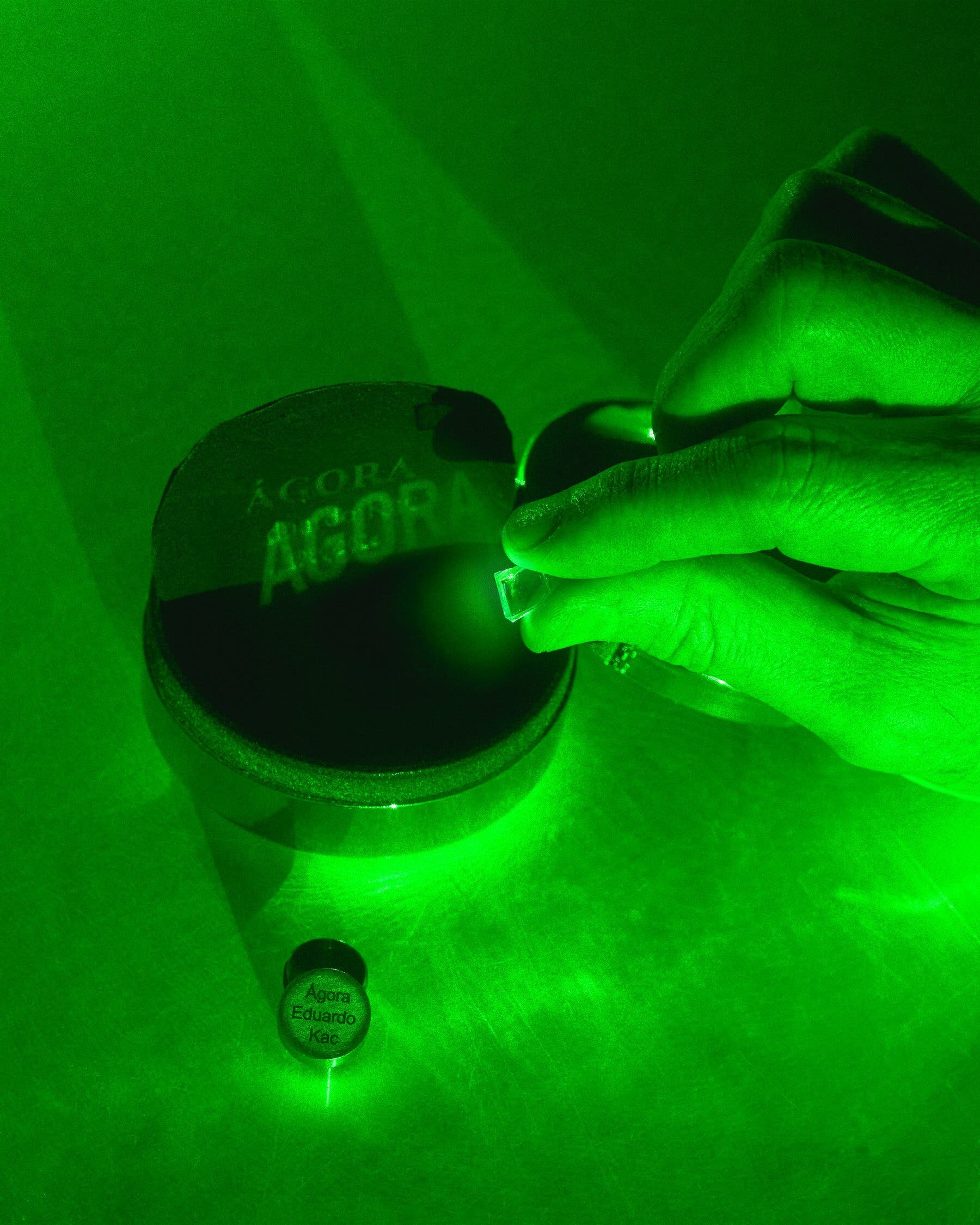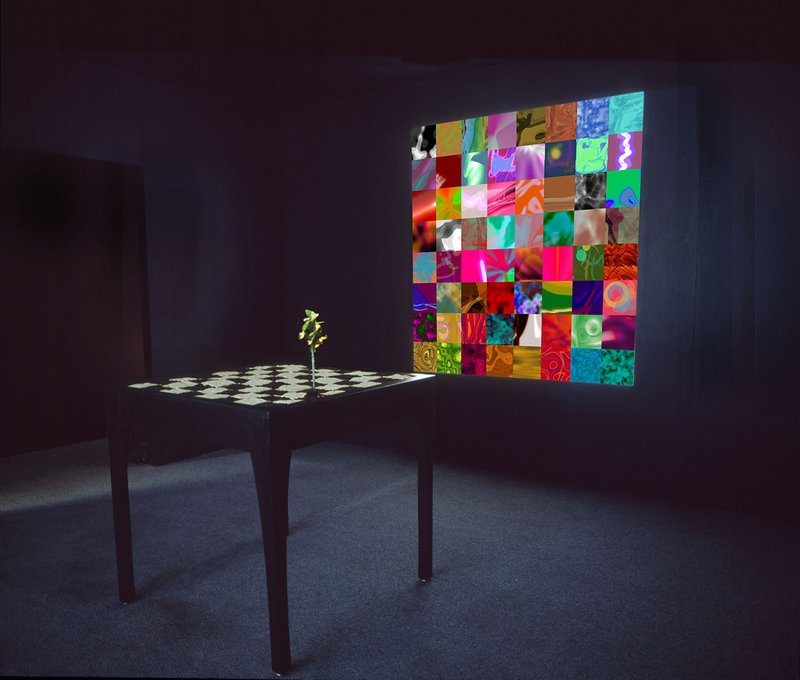Insights from the Experts: SU Faculty Share Favorite “BioArt” Works by Eduardo Kac
Syracuse University professors comment on notable "BioArt" creations by renowned artist Eduardo Kac, who will be the keynote speaker for the Kashi and Kameshwar C. Wali Lecture on October 24.

This year’s Kashi and Kameshwar C. Wali Lecture in the Sciences and Humanities will feature Eduardo Kac, a pioneer of “BioArt” which is a sub-genre at the intersection of science and art.
Kac is an internationally renowned contemporary artist, whose works appear at the Museum of Modern Art in New York City, the Tate Modern art gallery in London and the Museo Reina Sofía in Spain. During his talk, “Rockets for the Sake of Poetry,” scheduled for October 24, from 4:30 to 6 p.m. in the Life Sciences Atrium, he will revisit key highlights in his career, with emphasis on his body of artwork dealing with outer space.
This year’s lecture will also touch on BioArt, an artform that first came to Syracuse University in 2018, when Heidi Hehnly, Renée Crown Professor in the Sciences and Mathematics and associate professor of biology in A&S, and Boryana Rossa, professor of film and media art in the College of Visual and Performing Arts (VPA), established the BioArt Mixer. Following the success and interest in that event, Hehnly and Rossa created the University’s first BioArt class in 2022, which is now offered every Spring semester as FMA 500 BioArt.
Kac’s talk is hosted by the BioInspired Institute and its Posthumanities: Arts and Sciences research focus group. Posthumanities scholars aim to push the boundaries of traditional scientific inquiry through activities and collaborations between the arts, humanities and science-based disciplines. Rossa and Newhouse professor G Douglas Barrett, co-leaders of the Posthumanities focus area, led the proposal to invite Kac in collaboration with BioInspired leaders Hehnly (associate director), Jay Henderson, (institute director and professor in the College of Engineering and Computer Science) and Jeremy Steinbacher (operations director).
A&S recently caught up with Hehnly, Rossa and Barrett to hear about some of Kac’s most influential works.

G Douglas Barrett’s favorite work, Ágora (1986 / 2024), is a “holopoem” that, when illuminated, shows the Portuguese word Ágora, derived from the Ancient Greek word for “a gathering place.” Without the accent, the word in Portuguese means “now.” Ágora flew to deep space on January 8, 2024, as part of the inaugural flight of United Launch Alliance's Vulcan Centaur rocket and will orbit the Sun forever, functioning as what Kac calls a “potential star.”
Professor Barrett’s Take: What’s interesting to me about Ágora is how it addresses problems of property and ownership in an era of space travel. Ágora consists of a small, square piece of glass recently launched into perpetual orbit around the Sun on January 8, 2024, by the Centaur V rocket sent by the private aerospace company United Launch Alliance.
To the naked eye, this transparent, thumb-sized object looks unremarkable. Yet when struck by a laser, the word “agora” hovers nearby in large, glowing-green sans-serif typeface, while the same word appears behind it with an acute accent on the first “a,” to spell “ágora.” The result is a kind of wordplay on an English term for “public space” and the Portuguese word for “now.” Public space now!—a demand complicated by the private space company that launched Kac’s sculpture into orbit.
In this way, I appreciate how Kac’s work embodies paradox and contradiction. It envisions the cosmos as a kind of utopia where public space replaces private property, while pointing to the seeming impossibility of such a vision under present systems of political economy.

Heidi Hehnly’s favorite work, GFP Bunny, is one of Kac’s most well-known projects, in which he used molecular biology and a gene found in jellyfish to create Alba, a bunny which turned fluorescent green when exposed to blue light.
Professor Hehnly’s Take: Eduardo Kac's GFP Bunny serves as a compelling intersection of science and art, particularly resonating with myself as a scientist who frequently uses green fluorescent protein (GFP) to create transgenic animals (organisms modified by introducing DNA from an unrelated species) for research purposes.
While scientists often employ GFP as a utilitarian tool to visualize protein expression or label specific cell types, Kac's artwork prompts a broader reflection on the ethical and philosophical implications of genetic modification. By using GFP not for scientific exploration but as a medium for aesthetic expression, Kac challenges us to reconsider our relationship with the organisms we manipulate, expanding the dialogue to encompass not only scientific utility but also cultural and moral considerations.
This piece's cultural significance lies in its ability to provoke discussion on the power and responsibility inherent in our ability to alter life, influencing and inspiring the field of BioArt to explore these nuanced conversations further.
Boryana Rossa’s favorite work, Move 36 (2002/04), is an installation that references a famous chess match between IBM’s robot Deep Blue and world champion Gary Kasparov in 1997, where the human player lost to the computer at move 36. Kac created a chessboard of earth and sand, placing a genetically altered plant at the decisive move. The plant was created using computer code that translated Descartes' statement, “I think, therefore I am,” into a gene. This modification caused the plant's leaves to curl. Move 36 reflects the fragile boundary between humanity, inanimate objects with seemingly lifelike qualities and nature.

"Move 36"
Professor Rossa’s Take: Exploring the flexible borderlines of concepts like human and non-human, both conceptually and physically, Kac creates a series of transgenic works, one of which is Move 36.
This was the most impressive chess move acknowledged by the world champion, Kasparov, as it was surprising that the machine had made it. Kac transforms this interaction into a transgenic plant, creating a living sculpture that makes us contemplate our own identification as humans as the ones caring for unachievable intelligence and propose a future in which the idea of the human being as “the crown of creation” will be challenged.
About the Lecture:
The Wali Lecture represents a partnership of the College of Arts and Sciences’ Department of Physics and the Syracuse University Humanities Center. It is part of the 2024-25 Syracuse Symposium "Community." The lecture was established in 2008 by the daughters of Kameshwar C. Wali, who was a longtime professor of physics at Syracuse whose interests spanned the sciences and humanities. It commemorates the vision, leadership, dedication and contributions that Kameshwar and his wife Kashi made to the University and to the greater community.
